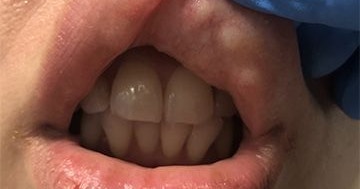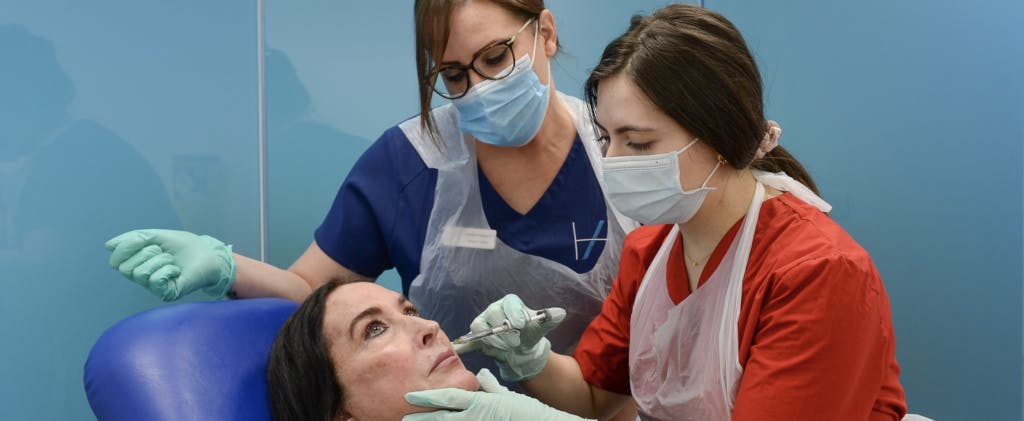Common Complications And How To Prevent Them

Complications happen, you just need to know how to deal with them. Here, a number of Harley Academy faculty members provide their expert advice on common complications and how to prevent them…

Expert advice on common complications and how to prevent them
Lumps from lip filler
Dr Kalpna Pindolia, director of education at Harley Academy and aesthetics specialist at STORY Marylebone.
The most common complications from injectable treatments tend to be lumps and bumps from lip filler. Learn how to avoid these in our article, How to Prevent Lumps from Filler.
Always come from a place of prevention – prevent, prevent, prevent! Know your complications recognition and management too, as prevention is not always possible. Being able to identify a potential issue is a crucial skill for any injector.
Approach each complication from the viewpoint of the patient, however badly behaved they may be. It is their face – of course they are upset. Give them the time to express themselves and solve the issue.
Under-treatment
Natalie Haswell, RGN, senior clinical trainer at Harley Academy, Allergan Medical Institute faculty member and owner of Haswell Aesthetics, Colchester.
Under-treatment is the most common complication I see, but it’s better to under-treat and add more product with toxin or filler at review, than to over-treat and increase the risk of complications and side effects. You can always add more product but rarely can you take it away – especially for toxin.

Spock eyebrows (brow ptosis)
Lorraine Guinnan, RGN, senior clinical trainer at Harley Academy and owner of Imagination Aesthetics.
I have been fortunate in the fact that I have not had many complications. However, I would say the main complication I encountered as a new injector was “spocking” from botox and lip lumps from filler.
My advice would be to review all of your botox patients initially. This enables you to build a good rapport and consent them for the fact that the botox may need to be tweaked after the first treatment. Also do not promise that areas can be “frozen” as this is often not achievable.
To avoid lip lumps my advice would be to ensure the product is injected at the correct layer and massage the lips post-treatment to ensure no lumps can be felt. Advise the patient to leave their lips alone and that they can take 2 to 4 weeks to completely settle. If lumps are persistent then it may be advisable to use hyaluronidase to dissolve them. However, conservative management is preferable and this would be a last resort due to the risk of complications from this.
Learning to prevent complications from injectable treatments
Whilst this advice is useful to aesthetics practitioners of all levels, it is particularly helpful for new injectors.
If you are still training or are considering one-to-one mentoring sessions to enhance your knowledge and confidence, feel free to run these scenarios past your trainer. They will be able to give you their own advice and the benefit of their experience in dealing with such issues.
Our newly enhanced Level 7 Diploma in Botox and Dermal Fillers now includes a more in-depth module on preventing, spotting and managing complications. And, this Preventing and Managing Complications eLearning course is also available as a standalone option. This makes the perfect companion for non-Level 7 students as you have ongoing access to the online course so can use it as a reference tool throughout your career.
For more information, or to discuss your specific training requirements, book a call with our head of student recruitment, Deneal Basi. He can guide you through the best options and set you on the right path for becoming #HarleyTrained!
All information correct at the time of publication
Download our full prospectus
Browse all our injectables, dermal fillers and cosmetic dermatology courses in one document
By submitting this form, you agree to receive marketing about our products, events, promotions and exclusive content. Consent is not a condition of purchase, and no purchase is necessary. Message frequency varies. View our Privacy Policy and Terms & Conditions
Attend our FREE open evening
If you're not sure which course is right for you, let us help
Join us online or in-person at our free open evening to learn more
Our Partners














STAY INFORMED
Sign up to receive industry news, careers advice, special offers and information on Harley Academy courses and services

